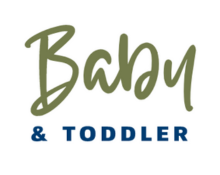
Breastfeeding after your milk has arrived involves establishing a breastfeeding routine and ensuring your baby is effectively nursing. Here are some key points to keep in mind during this phase:
Feed on demand: Breastfeed your baby on demand, which means offering the breast whenever they show signs of hunger. This may be around 8 to 12 times a day in the early weeks. Watch for hunger cues such as rooting, sucking motions, hand-to-mouth movements, or increased alertness.
Positioning and latch: Ensure a proper breastfeeding position and a deep latch. Find a comfortable position for both you and your baby, such as the cradle hold, cross-cradle hold, or side-lying position. Make sure your baby’s mouth covers a significant portion of the areola, not just the nipple, to ensure effective milk transfer and prevent nipple soreness.
Watch for feeding cues: Observe your baby for signs of effective feeding. Look for rhythmic sucking and swallowing sounds, relaxed facial expressions, and rounded cheeks. These are signs that your baby is actively nursing and getting milk.
Emptying both breasts: During each feeding, offer both breasts to ensure adequate stimulation and milk production. Start on one breast and let your baby nurse until they show signs of being satisfied or detached from the breast. Then, offer the second breast, which can help ensure your baby gets both the foremilk (initial milk) and hindmilk (richer, higher-fat milk).
Establish a routine: Establishing a breastfeeding routine can help you and your baby get into a rhythm. However, it’s important to remember that every baby is different, and feeding patterns can vary. Be flexible and responsive to your baby’s needs, as they may go through growth spurts or have changing feeding patterns.
Take care of yourself: Proper self-care is essential for maintaining milk production and overall well-being. Stay hydrated, eat nutritious meals, and get enough rest. Avoid excessive stress and seek support from your partner, family, or friends to help with household chores or caring for older siblings, if possible.
Seek support: If you have any concerns, questions, or difficulties with breastfeeding, don’t hesitate to seek support from a lactation consultant, midwife, or healthcare provider. They can offer guidance, address any issues you may be facing, and provide reassurance and encouragement.
Remember, breastfeeding is a journey that requires practice and patience. Each day, your breastfeeding relationship with your baby will evolve and strengthen. Trust your instincts, listen to your baby’s cues, and seek help when needed. Enjoy the special bond and nourishment that breastfeeding provides for you and your little one.
